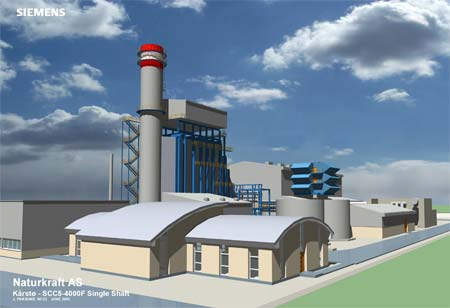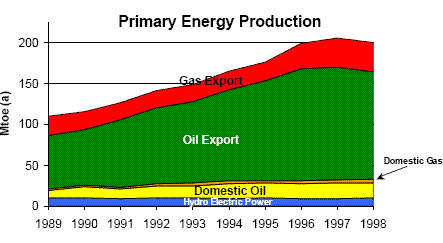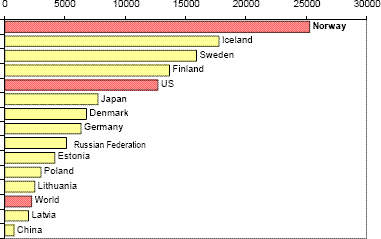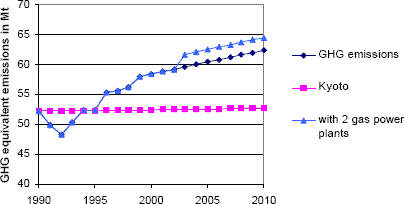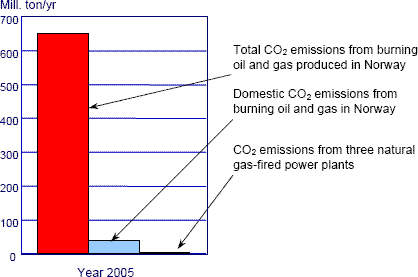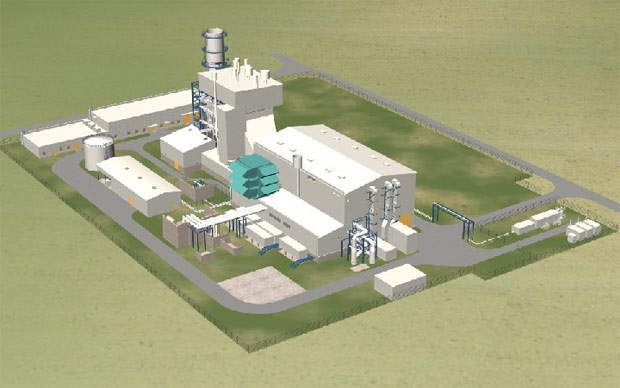Norway’s first commercial onshore gas-fired power plant has been built by Naturkraft at Kårstø in Rogaland, western Norway. The 420MW plant claimed the lowest climate-gas emissions of any fossil fuel-based power plant in Europe. A
filtering system will cut NOX emissions by more than 80%. Although the plant was built without gas scrubbing for CO2 emissions, this may be installed later. Total investments were around NOK2bn.
The Kårstø plant uses the vast gas resources from the Norwegian Continental Shelf, and started electricity production in the winter of 2007. The project delivers up to 3.5 terawatt hours (TWh) a year to the Norwegian power grid,
corresponding to around 3% of Norway’s total electricity production. That corresponds to the consumption of about 175,000 households. The plant uses up to 600 million m³ of natural gas/year, or 0.5% of Norway’s annual gas exports.
FILTERING CUTS NOX BY MORE THAN 80%
Naturkraft is owned by Hydro and Statkraft, each holding a 50% stake. The Norwegian Water Resources and Energy Directorate (NVE) and the Norwegian Pollution Control Authority (SFT) provided licences. Naturkraft has invested over NOK200m in
infrastructure at Kårstø, completing much of the ground work. Work in 2005 prepared for the large components being installed in 2006.
The combined-cycle equipment was installed by Siemens. A gas turbine generates the electricity, with the waste heat being used to generate steam for a steam turbine. At full production, the plant emits roughly 1.2 million tonnes of
CO2eligible for trading under Europe’s new emissions trading scheme. It employed about 500 people during construction and up to 30 people since then. The Norwegian share of the investments was estimated at around 25%.
BUILDING PLANTS IN NORWAY AND GERMANY
Norway has previously generated electricity from renewable energy sources, with over 99% coming from hydropower. The hydropower infrastructure has however been heavily developed. In 1973, a strong environmental opposition to river development led the
government to permanently preserve designated rivers and cut around 35 out of the 175TWhs of annual production potential.
The country has major petroleum resources, making it the world’s second largest oil exporter. Oil and natural gas production has been increasing steadily. Norway sits on approximately half of the remaining reserves of oil and gas in Europe. It has been increasing gas exports, accounting for 30% of European gas imports. In 2020, gas is predicted to outstrip oil as the major money-maker in the Norwegian oil and gas industry.
GAS AIMS AT NEAR 20% OF WORLD’S ELECTRICITY PRODUCTION
By 2010, 17% of the world’s electricity production should come from gas-fired power plants. Statkraft is involved in the construction of three projects, including a combined heat and power station at the Mongstad refinery near Bergen, Norway.
Norwegians have some of the largest homes in the world and they rely largely on electricity for space and water heating. Combined with the cold climate, that means that Norway has the highest electricity consumption per capita in the world, with demand
rising at about 2% per year.
This comes from historically low electricity prices, and the low environmental impacts of hydropower. The country also imports electricity, some of which is generated in coal-fired power plants.
PLANTS FORCED RESIGNATION OF NORWEGIAN GOVERNMENT
Norway has been one of the first countries to try to adapt policies to meet its emissions targets. Reducing greenhouse gas emissions in the country is however difficult. In March 2000, the Norwegian minority government resigned over the plans to
build the gas-fired power plants. It was the first government to fall because of global warming.
The government wanted to hold off construction until new technology, such as carbon sequestration, was available. Carbon dioxide emissions from a power plant like the one in Kårstø account for around 2% of Norway’s total carbon
dioxide emissions.
RESISTANCE TO GAS-FIRED PLANTS
A broad coalition of environmental NGOs and citizens’ groups is fighting to stop the construction of the new gas-fired power plants.
They remark that the plants will emit 2.1 million tonnes of CO2 a year, and increase Norway’s CO2 emissions by 5–6%, as much as half the cars in Norway.They will also add to acid rain formation, which has already damaged south-west Norway.
Rygarden is relatively inefficient, using only 58% of the total energy, rather than the potential of above 85% for combined heat and power. Naturkraft will also be exempt from the Norwegian CO2 tax to ensure the plants are profitable.
The groups point out that this hidden subsidy is costing around NOK740m (more than $100m) every year.

